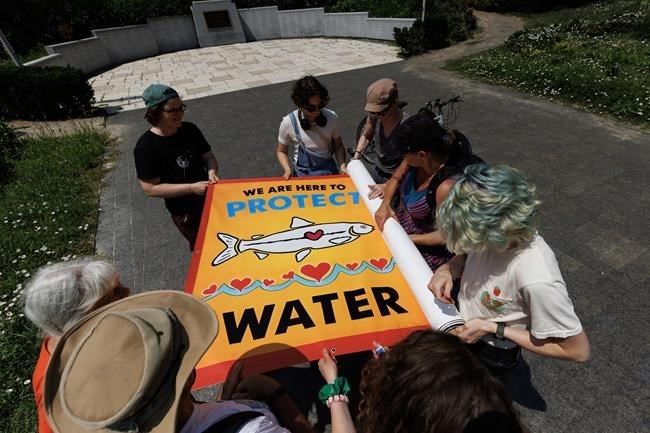TORONTO — Members of several First Nations rallied outside the Ontario legislature Thursday to raise concerns about mining exploration they say is happening on their lands against their will.Â
Indigenous leaders and community members said they weren't consulted as mining prospectors staked claims on their territories. They also pushed back against the province's plans to expand mining in the mineral-rich Ring of Fire region, about 500 kilometres northeast of Thunder Bay.Â
"We want our land to stay pure. We are not just doing this for us today, we are doing it for future generations so they will be able to continue to do our traditional practices and way of life," said Grassy Narrows First Nation Chief Rudy Turtle.
"We are fighting for that."
In February, four first Nations – Grassy Narrows, Wapekeka, Neskantaga and Big Trout Lake First Nations – said they formed an alliance to defend their lands and waters after mining prospectors staked thousands of new claims on their lands over the last few years.
They said they wanted the provincial government to seek their communities' informed consent before allowing companies to explore the First Nations' lands for precious minerals.
Muskrat Dam First Nation has since joined that alliance and Turtle, of Grassy Narrows, said he hopes more communities become part of the group.Â
Grassy Narrows First Nation, located about 100 kilometres northeast of Kenora, Ont., has said it has seen about 4,000 mining claims on its lands since 2018, when the Ontario government allowed any licensed prospector to register a mining claim online for a small fee.
The government's online mining system does not tell prospectors before they stake a claim whether the land is part of an Indigenous territory.
A government spokesperson said in a statement Thursday that the Supreme Court of Canada "has confirmed that Ontario can authorize development within the Treaty 3 area" in the province subject to satisfaction of its obligations regarding Indigenous Peoples, including the duty to consult.
"We will continue working towards consensus on resource development opportunities by carefully balancing the priorities, needs and concerns of Indigenous communities that exercise Aboriginal or treaty rights in the Northwest, including other Indigenous communities that, like Grassy Narrows, hold rights under Treaty 3," the spokesperson said.Â
On Thursday, First Nations members also raised concerns about the province's development plans in the Ring of Fire, saying they wanted further engagement with the government as they looked to have their land rights safeguarded.Â
"There hasn't been any consultation at all and here's Ontario saying they have legally consulted the community during the pandemic when we couldn't even meet during the pandemic, we had our community lockdown," Neskantaga First Nation Chief Chris Moonias said.
Those rallying at the legislature said Thursday that several First Nations groups planned to hold a march in September to reiterate their call for the government to "end unwanted mining activity on their territories."Â
The Indigenous affairs minister has previously said the government is focused on building relationships and meets regularly with Indigenous leaders from across the province.
This report by The 91Ô´´ Press was first published July 20, 2023.
Nairah Ahmed, The 91Ô´´ Press



